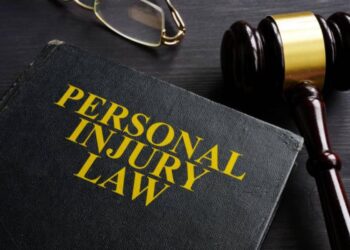Imagine this: you’re driving down the road, minding your own business. Suddenly—BAM—your life changes in an instant. A serious traffic accident occurs, leaving you shaken and uncertain about what to do next.
In such a chaotic and overwhelming situation, it’s crucial to understand your rights. Knowledge empowers you to navigate the aftermath of a traffic accident, ensuring you receive the support and compensation you deserve.
Various different laws and regulations address these situations within the States, aiming to safeguard individuals involved in accidents.
This article will delve into the intricacies of understanding your rights after a serious traffic accident. We will explore legal frameworks, common challenges faced by accident victims, and proactive steps you can take to protect yourself.
14 Steps To Protect Your Rights After A Traffic Accident
“The damage is done, so I guess I’ll be leaving”… NO! This is not some imaginary scenario from a Justin Timberlake song. In the real world, you have to stay, man up, and face the consequences after the occurrence of a traffic accident, whether it was your or someone else’s fault.
But in order to secure your rights right after the traffic accident and avoid getting the short end of the stick, we’ve compiled this comprehensive 14-step guide. So if you’re at the scene right now and reading this on your mobile or tablet, hurry up scrolling down.
1. Ensure Safety
Prioritize safety by moving yourself and others involved to a safe location, if possible. If the vehicles are obstructing traffic and can be moved safely, consider moving them to the side of the road to prevent further accidents. Turn on hazard lights and use warning triangles or flares to alert oncoming traffic.
2. Call 911
After ensuring everyone’s safety, call 911. It is crucial to report the accident to the authorities, especially if there are injuries or significant damage to property. The emergency dispatcher will ask for specific details about the accident, such as the location, the number of vehicles involved, and the presence of any injuries.
It’s essential to provide accurate and concise information to ensure that the appropriate emergency services, such as police, ambulances, or firefighters, are dispatched promptly.
3. Document the Scene
While waiting for emergency services to arrive, try to gather your wits and document the scene. Take your phone (assuming it’s still intact) and capture photographs or videos of the accident site. These images will serve as crucial evidence later on.
Here are the things you need to document before anyone else arrives at the scene or the vehicles are removed:
- The position and condition of the vehicles involved in the accident.
- Any visible damages to the vehicles, including dents, scratches, or broken parts.
- Skid marks or debris on the road that may indicate the sequence of events.
- Traffic signs or signals relevant to the accident.
- Road conditions, such as potholes or slippery surfaces.
- Weather conditions at the time of the accident, including visibility and any precipitation.
- Injuries sustained by anyone involved in the accident, including yourself.
- The overall scene of the accident, including the surrounding area and any unique features that may be relevant.
4. Gather Other Driver’s Information
Exchange information with the other driver(s) involved in the accident. Note down their name, address, residency, driver’s license number, and license plate information. These details are vital for filing insurance claims and pursuing legal action if necessary.
5. Don’t Trust the At-Fault Driver
The other driver may probably promise to take care of things, give you a lift to the hospital or home, and buy you water or some medicine. Don’t be deceived by the at-fault driver’s promises or gestures of goodwill. While they may initially offer assistance or appear sympathetic, it’s important to remember that their interests may not align with yours.
Also, don’t ever think about not calling the police, because you’ll definitely be granting them the opportunity to walk away free, without anyone or anything serving as valid evidence for your financial settlement in the future.
6. Don’t Admit Your Fault
In the aftermath of an accident, emotions run high, and it’s natural to feel the urge to apologize or accept blame.
However, it’s crucial to refrain from admitting fault, especially when there might be huge consequences resulting from this admission. Fault can be legally complex and determined by a variety of factors, especially in case of traffic jams. There are so many rules and traffic signs that you might have overlooked that switch your imaginary blame. Thus, it’s best to leave that decision to the professionals.
7. Contact the Local Police Department
Depending on the severity of the accident, it’s essential to involve law enforcement. They will assess the situation, gather information, and file an official report. As a matter of fact, reporting the accident to the police is obligatory in the majority of U.S. states. The police report can serve as a crucial document when filing an insurance claim or dealing with legal matters related to the accident.
8. Talk to Witnesses (If There Are Any)
If there were witnesses to the accident, talk to them. Their unbiased accounts can be invaluable in supporting your version of events. Also, make sure to take their personal information and contact numbers for further reference.
9. Talk to an Experienced Attorney
When navigating the complex web of legalities, seeking guidance from an experienced attorney can be a game-changer. So, if you find yourself in a sticky situation on the roads of New York, don’t hesitate to call a truck accident lawyer from New York.
With their expertise, they’ll help you navigate the twists and turns of your traffic accident case, ensuring you receive the compensation and resolution you rightfully deserve. It is better to talk to an attorney, especially when you are not aware of the concept of waiver of subrogation provision.
10. Have Your Injuries Attended
Once you’ve gathered all the necessary information, seek medical attention promptly (even for minor injuries). Prompt treatment not only ensures your well-being but also creates a record of your injuries, linking them directly to the accident.
11. Cooperate With the Police Officer
When the police officer arrives at the scene, provide them with your driver’s license, vehicle registration, and insurance information. Answer their questions truthfully and to the best of your ability. Remember, it’s important to stick to the facts and avoid speculating or admitting fault.
12. Have Your Vehicle and Damage Fully Inspected
Don’t neglect your vehicle’s well-being. Have it thoroughly inspected by a trusted mechanic to assess the full extent of the damage. This inspection will help determine the cost of repairs or replacement.
13. Keep Records of All Your Damages
To streamline the claims process, keep meticulous records of all your damages. Maintain a file with the claim number, medical bills, car reparation bills, and any communication with insurance adjusters. Organization is key in proving your losses.
14. Be Patient and Polite
Patience is a virtue when dealing with insurance companies, legal processes, and negotiations. Stay calm, be polite, and cooperate throughout the proceedings. Your professional demeanour will only strengthen your position.
Summary
In a world where accidents are a reality, knowledge is the key to safeguarding your rights and finding justice.
By documenting the scene, gathering evidence, and seeking legal guidance, you can confidently navigate the complex landscape of insurance claims and legal proceedings in the aftermath of a traffic accident.
While accidents may disrupt your journey, you can get back on the road to justice with the right knowledge and support.










